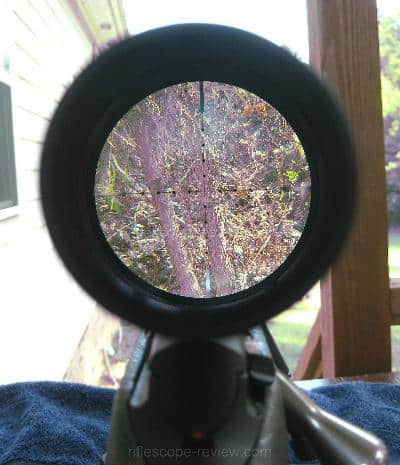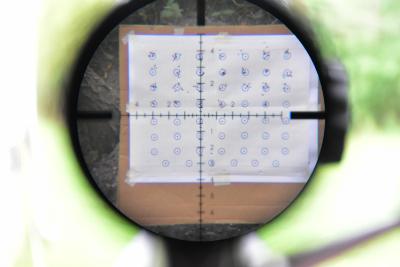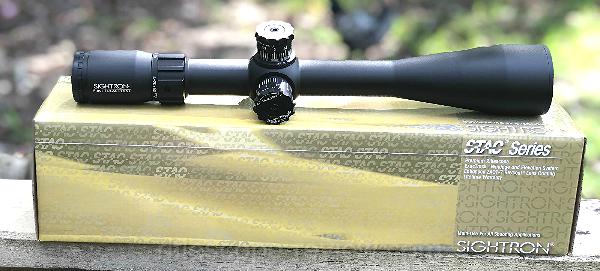As an Amazon Associate I earn from qualifying purchases. Amazon and the Amazon logo are trademarks of Amazon.com, Inc, or its affiliates.
If you’ve been shopping for a new rifle scope or considering a new rifle scope, there’s an excellent chance that you’ve seen or come across a reference to a first focal plane scope, or as it’s more commonly called, an FFP rifle scope. These days, at the scope counter, some of the more common questions I’m asked have to do with FFP scopes. Those questions are typically focused on the mechanics of first focal plane scopes, how they work, and how an FFP scope compares to a second focal plane (SFP) scope, etc.
The FFP vs SFP debate has become so prevalent that it’s commonly one of the first things that prospective scope customers are asking before they even start shopping for a scope.
So, let’s take a deep dive into the most common questions I see and hear regarding FFP optics.
First, it’s essential to have a clear understanding of precisely what the SFP and FFP acronym abbreviations mean regarding rifle scopes. FFP is an acronym that stands for First Focal Plane, and SFP is an acronym that stands for Second Focal Plane.
The “plane” refers to where the rifle scope reticle is placed internally (as in within the scope mechanics) in relation to the scope lenses and relation to the shooter’s eye.
Second Focal Plane Rifle Scopes
If you’ve got any experience looking through a rifle optic, then chances are, you’ve already seen a second focal plane or SFP scope. The SFP scope design has been around for years and years, and second focal scopes probably make up about 85% of all the rifle scopes that are currently on the market.
In a second focal plane scope, the reticle is mounted in the second focal plane area closer to the eye box of the scope. With this design, the reticle appears to be the same size regardless of the power magnification.
First Focal Plane Scopes
First focal plane or FFP scopes have only been around about the last ten years and were introduced for long-distance shooting. I saw my FFP scope about eight years ago at a long-range match, and I thought it was broken when I first looked through it (because I had been raised on SFP scopes).
In a FFP scope, the reticle is mounted in the first focal plane of the scope, which is back farther towards the ocular bell. With this design, the reticle starts out very small in the lowest power magnification setting and then grows larger as the power magnification increases.
What’s the Difference Between FFP Scopes and SFP Scopes?
Although I’ve already touched on it, we’ll go over it once more. The most significant difference between the two scope styles is the reticle size. On an SFP scope, the reticle stays the same regardless of magnification power. So, for example, if you have an SFP scope with a power range of 4-14, then the reticle on that scope appears as the same size when the power is set to 4 as it does when the magnification is maxed out at 14.
 |
 |
| SFP Reticle as seen at 6 Power | SFP Reticle as seen at 20 Power |
With an FFP scope, the reticle or crosshair changes size as the scope magnification goes up in power. So, if you had an FFP scope with a 4-20 power range, the reticle would appear it’s smallest at the lower magnification settings (4X in this case), and then would increase in size as the power magnification increases, until the reticle tops out at the 20-power setting.
 |
 |
| FFP Reticle as seen at 4 Power | FFP Reticle as seen at 20 Power |
What’s all the Hype to an FFP Scope?
All the hype with FFP scopes primarily focuses on long-range shooting, but it can be applied to other types of shooting as well. All SFP scopes feature a specific power setting using ether a mil or moa-based reticle, where the reticle subtends (usually hash marks or dots) are “true” as in correctly spaced. Depending on the scope maker and model, this “true” setting is usually either at the highest magnification or the 10X power. The “true” point is also commonly known as the “subtend” setting as well.
In this setting, the subtend setting is accurate and valid. However, if you move the power range either up or down, then the shooter has to do the math on the fly to compute the needed holdover or hold under at the lower magnification (even though the range to target hasn’t changed). If the distance to target changes, then additional calculations are required as well.
However, with an FFP scope, the subtend values are valid throughout the entire power range. So, if you were shooting at a target with an FFP scope and had a 4 mil holdover on 8 power, it would also be a 4 mil holdover on 16 power.
And, that’s really the main benefit of a first focal plane vs second focal plane scope.
FAQS
Here are some of the more common questions that I am asked about FFP scopes:
What is FFP when talking about a rifle scope?
As mentioned previously, FFP is an acronym that means First Focal Plane, and it refers to the location of the reticle within the lenses of the rifle scope.
Do I need an FFP scope, or should I buy an FFP scope instead of an SFP scope?
The answer to that question will somewhat depend on what type of shooting or hunting you are planning to do, combined with your own personal preferences. Rather than go into a long convoluted answer with technical data, here’s a more high level answer: if you are planning on shooting or hunting at longer ranges (say 600 yards and beyond), then an FFP scope might be worth considering as they are easier to master for that type of shooting.
If you are shooting or hunting under 600 yards, then the traditional SFP scope model will most likely work just fine.
Can I hunt with an FFP scope? Or can you discuss an FFP scope vs an SFP scope for hunting?
You certainly can, but you need to be aware of one very important aspect of hunting with an FFP scope: at lower power ranges, the reticle on an FFP scope is much smaller than what most people are used to with an SFP scope reticle. And, I don’t mean a little smaller, I mean really small.
That’s not to say that you can’t hunt with the smaller reticle of an FFP scope on low power, but it may take some getting used to.
Why are FFP scopes more expensive than SFP models?
Although not all FFP scope models cost more than their SFP counterparts, most FFP scopes do tend to be priced more than a comparable SFP model.
I’ve posed the “why do FFP models cost more”? question to reps from various scope brands and the general consensus answer has been that the higher price point of the FFP scopes is tied to the additional production costs of mounting the reticle in a different location within the scope internal body (compared to the costs of mounting the reticle in the traditional second focal plane location).
Is an FFP scope worth the additional money?
That’s a hard question to answer as it really depends on what type of shooting you are doing. If you are doing any type of long-range shooting, you’ll most likely find the advantages of an FFP scope to be worth the costs.
If you’re not doing any long-range or long-distance shooting or hunting, then the additional costs of an FFP scope model probably won’t be worth it to you.
Can you recommend an FFP scope for rimfire rifles?
Currently, I’m not aware of any scope brand offering a dedicated rimfire FFP scope model, although I’m sure it’s only a matter of time before one hits the market. However, most any FFP scope with a mid-range power range could be adapted for use with a rimfire rifle.
I have shooting buddies who have tried FFP scope models on a rimfire rifle (17 HMR and 17 WSM) for prairie dog hunts at shorter ranges and the FFP models worked just fine at the higher power ranges. However, many of those folks also complained that, at the lower power ranges, say anything from 10X under, the reticle was too small to be effective.
What are the pros and cons of an FFP scope?
Pros (as I see it)
(1) Better for long-range shooting or hunting compared to an SFP scope (easier math)
(2) Can function much like a traditional SFP scope at higher magnification
Cons
(1) Typically, more expensive
(2) The reticle is very small at the lower end of the magnification range
(3) Can be confusing to master if trained on an SFP scope
Can I use an FFP scope for coyote hunting?
Certainly. As hunting applications go, coyote hunting is one of the more popular types of hunting where an FFP scope is potentially a good option. This is especially true if you’re hunting scenarios include long distance shots at coyotes.
You just have to be aware of the smaller reticle size at the bottom of the scope power range.
How can I tell if a scope is FFP or SFP?
If you look at an FFP scope and an SFP scope side-by-side, they look identical to the naked eye.
Typically, there are two ways to tell if a scope is an FFP model:
(1) If you have access to the box that the scope came in, then it may be marked on the box as being either an FFP model or an FFP model.
(2) The more common, and easier way is to just look through the scope and adjust the magnification power up. If the reticle stays the same size as you change the power, you have an SFP scope. If the reticle gets larger as the magnification power increases, then you have an FFP rifle scope.
Can you recommend or point me towards a cheap FFP scope?
If you are looking for a more budget-friendly or entry-level FFP scope that offers good performance on a budget, then check out the Athlon line of FFP rifle scopes.
Can you recommend a good FFP scope for under $500?
I actually already put together a write-up about what I consider to be the best FFP scopes for under $500, and you can see that here.
Which rifle scope type is better for hunting, SFP or FFP?
For probably 85% of the general population, the traditional SFP scope is going to offer a better, less expensive scope for hunting.
If you are a long range shooter or long range hunter, then the FFP option might be worth looking into.
Can you recommend an FFP scope for a 22LR?
As I previously mentioned, I’m not aware of any scope brands who are currently making or offering an FFP scope that is dedicated to the 22LR caliber.
But you could adapt most any FFP scope with a lower power range (say 3-12 or 4-16) over for use with a 22 rifle without any problems. Again, understanding that the FFP reticle will be very small on the lower 4X or 3X powers.
Which type of scope is better for long-range shooting, FFP or SFP?
Both FFP and SFP scopes have their advantages and disadvantages for long-range shooting. FFP scopes are generally preferred because the reticle grows and shrinks with the target as you change the magnification level, allowing for precise holdovers and windage adjustments at any magnification. However, SFP scopes can still be effective for long-range shooting if you use a specific magnification setting and know the subtensions of the reticle at that magnification.
What is the difference in MOA adjustments between FFP and SFP scopes?
The difference in MOA adjustments between FFP and SFP scopes lies in the functionality of the reticle. In FFP scopes, the MOA values on the reticle remain consistent regardless of the magnification level, making it easier to make accurate adjustments for windage and elevation. In SFP scopes, the MOA values on the reticle only correspond to the specific magnification setting, so you need to be aware of the appropriate setting to make accurate adjustments.
Can I use an FFP scope for close-range shooting?
While first focal plane scopes are primarily designed for long-range shooting, they can still be used for close-range shooting. However, at low magnification levels, the reticle may appear larger and may obstruct your view of the target. So, if you primarily engage in close-range shooting, a second focal plane scope might be a better option as the reticle remains the same size regardless of the magnification level.
Which type of scope is better for hunting?
The choice between FFP and SFP scopes for hunting purposes really depends on your specific hunting needs and preferences. If you are hunting at varying distances and need the versatility to make accurate holdovers and windage adjustments at any magnification, an FFP scope might be the better choice. However, if you typically hunt at specific distances or prefer a simpler reticle, an SFP scope could be more suitable.
What are the advantages of FFP scopes?
The advantages of FFP scopes include the ability to make accurate holdovers and windage adjustments at any magnification, versatility for long-range shooting, and precise shot placement. Additionally, FFP scopes eliminate concerns about the reticle subtensions changing with the magnification level, making it easier to make consistent and accurate shots.
What are the advantages of SFP scopes?
The advantages of SFP scopes include a simpler reticle design, consistent MOA values at a specific magnification setting, and potentially lower cost compared to FFP scopes. SFP scopes are also suitable for shooters who are used to a specific magnification setting and prefer a fixed-size reticle.
Do FFP scopes have a rear or front focal plane?
FFP scopes have the reticle placed in the first focal plane. This means that as you increase or decrease the magnification, the reticle grows and shrinks accordingly. So, you can say that the reticle is in the front focal plane of FFP scopes.
Hopefully, you found this information discussing the differences between FFP and SFP scope models helpful. I’ll try to update this page if and when any new information becomes available.
I’ve been working in the firearms and sporting optics industry for over 20 years, with a personal and professional interest in all things related to rifle scopes, Through a combination of work experience, formal training, and personal experiences, I have extensive experience mounting, testing, and evaluating different rifle scope models across most major optical brands.


